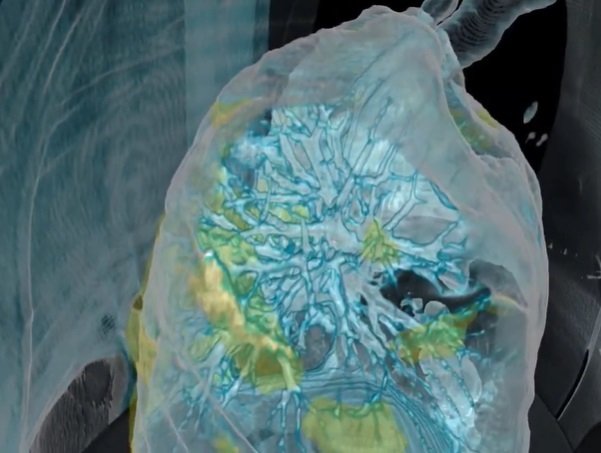
Virtual reality technology developed by Air Force Veterans in Washington Hospital helps Corona fight
The hospital uses the Surgical Theater platform to explain the immense damage that the Corona virus can cause to the public through 3D virtual reality, and thus harness the public to obey instructions.
Imaging Corona Virus Injury in Health. Photo: Chirurgical Theatre.
For the first time at George Washington University Hospital in the United States, US-Israeli Surgical Theater Virtual Reality Technology, which has used for several years to design and perform complex surgeries while converting patient CT and MRI scans into leading reality imagery in leading hospitals in the United States, is being used. The hospital also uses the platform intuitively explain to the public the enormous damage the corona virus can cause that, and thus harness the public to heed the instructions of health officials.
In the world of virtual and laminated reality, Surgical Theatre has developed a leading medical imaging system. The clinical system processes patient's two-dimensional imaging scans such as CT and MRI, and constructs a 360-degree model of virtual reality. The model created can seen better, and the patient's anatomy and clinical problem can seen in 3D. Two Air Force veterans founded California Surgical Theater: Motti Avishar, a senior engineer in the technical system of the Air Force, and Alon Geri, who served as a pilot for the helicopters. The two jointly led the development and absorption of the advanced flight simulator for the U.S. Food and Drug Administration-approved F-16 Surgical Theater technology and even approved for use by the Israeli Ministry of Health. Following the successful use of technology by the leading hospitals in the US, several hospitals in Israel have been examining the absorption of the system in recent months.
A few days ago George Washington University Hospital received the first patient from Corona. The man arrived at the hospital in his late 50s after suffering from aggravating symptoms with fever speed, cough and shortness of breath. They connected it to a ventilator in the hospital, but it required more intensive intervention.
"We've seen that the damage to patient health is exploding, and we've reached a point where it needs maximum ventilator support," Dr. Keith Mortman, Chest Surgery Department director, said in an interview with the HealthCast podcast at the hospital.
The hospital was the first to use virtual reality technology in the United States to analyze chest x-rays, and other hospitals intend to follow suit. "We could get an inside look at the patient's lungs using virtual reality technology from Surgical Theater, and what we saw looked alarming," says Dr. Mortman.
"When we used the Surgical Theater system to create the 360o 3D files, we saw that there was a significant difference between the abnormal lung-infected lung and the healthier lung tissue nearby," Dr. Mortman said. "The difference is so obvious that in order to understand the images you don't have to be a doctor. The damage we see limited to a specific part of the lung.
"With the technology of Surgical Theater, anyone can easily see and understand the extent of damage to the lung tissue from the virus. I want the public to watch the video and anyone who has not yet addressed the instructions of the health care system may now understand the damage caused by the virus to the lungs and the potential damage caused by Japan "The virus does not discriminate between sexes or between ages. It can be dangerous at any age."
"We know most people will have mild symptoms, but around 20 percent of patients will have more severe symptoms until they need artificial breathing," Dr. Mortman adds. Dr. Mortman is concerned about the potential for continued damage to the lungs of those surviving the corona. "Over time, this inflammation doesn't go away, it creates long-term scars for health," he said.
"We allow the health of the coronary patient to be seen from every angle, including inside and between the tissues," said Alon Zuckerman, P. "This makes the discussion clear and intuitive and even opens up opportunities for clinical research. In brain and complex surgery in other body organs, they have proven it that looking at a unique angle using our technology has led to improved surgery and life-saving"
Eli Moshe, Vice President and CEO of the European and Middle East region at Surgical Theatre, added that the system is currently being examined at several hospitals in Israel and, an application has made to the Innovation Authority to pilot Rambam Hospital and Galilee Medical Center.


